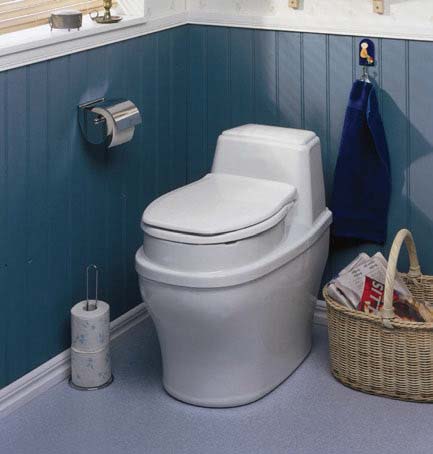The original toilet was probably a hole in the ground – a waterless composting toilet. Human excrement left lying on the ground will decompose (compost) the same as any other animal excrement, and any other way of dealing with it is a refinement of the basic process. The main reason we have to deal with human waste in more sophisticated ways is population density. The level of complexity of a waste management system is generally directly related to the volume of waste needing to be treated. In a small rural dwelling on acres, a simple system will suffice; whereas a multi-story apartment block, housing up to hundreds of people, needs a complex system to ensure a healthy environment.
The basic principle of minimum impact treatment is to keep liquid separate from excrement. This is important, as it is the excrement that is the major source of bacteria, germs and viruses; if liquid is mixed with excrement the pollution factor is multiplied many times.
The development of the flush toilet was possibly the greatest factor in creating the massive problems currently experienced with sewage outfalls in our waterways. Avoiding the flush toilet is the best step that can be taken to solving sewage-based pollution.
There are various commercial suppliers of composting toilets, and most models supplied are approved by NSW and Victorian health authorities.

